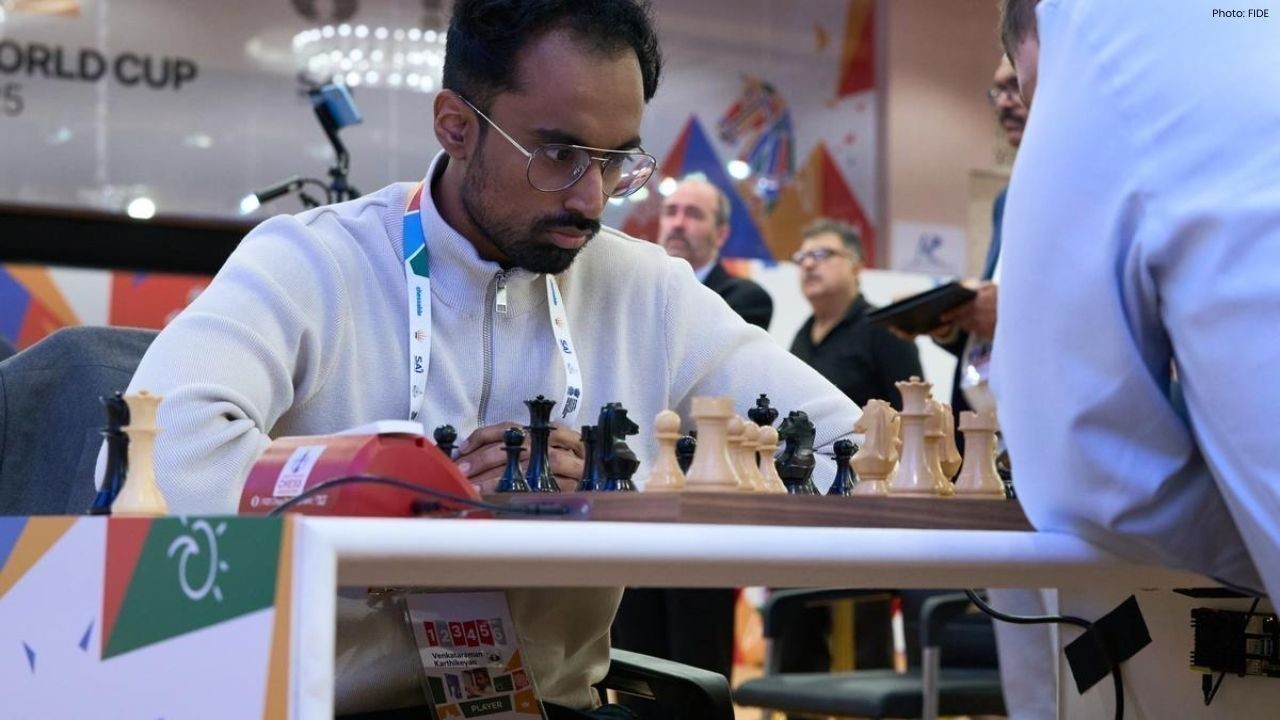
Post by : Anis Karim
For years, fingerprints were the king of digital security. A thumb on a scanner, a quick touch to unlock phones and access systems — it felt futuristic. But the world has moved fast. Security threats evolved, remote access culture expanded, and digital ecosystems became deeply integrated into everyday life.
Today, a silent revolution is taking place. Modern identity technology goes far beyond fingerprints or face scans. We are stepping into a world where your voice, your veins, your unique behavioural rhythm, and even the way you hold your device may determine who you are.
This transformation signals a shift toward ultra-personal, unique-to-human identity security — a direction driven by convenience, safety, and deeper protection against fraud.
Fingerprint and facial recognition brought convenience, but they face limits:
– fingerprints can be lifted from surfaces
– high-quality photos or deepfake methods challenge face recognition
– identical twins and siblings sometimes confused systems
– biometric storage hacks pose privacy risks
– contact-based methods face hygiene concerns
Threat actors are more sophisticated. Data breaches have become common. Cybercrime has grown into a global underground economy. In this landscape, identity cannot depend on one static marker.
The security philosophy is shifting from “what you have” or “what you know” to who you inherently are — and how you behave.
Voice is more than sound — it's a signature of airflow, vocal cord movement, tone shape, and speech rhythm. No two voices are the same. Voice biometric systems analyse:
– tone and pitch
– frequency patterns
– vocal vibration signatures
– articulation and rhythm
– mouth and nose resonance
Voice is already being used in:
– banking authentication
– customer support verification
– smart devices & virtual assistants
– secure workplace systems
– healthcare access for visually-impaired users
The benefits are powerful: hands-free, remote-friendly, and natural.
But challenges exist. Systems must guard against playback attacks, AI-generated voices, and environmental noise. New models now detect live, breathing speakers, emotional tone shifts, and vocal stress responses to stop manipulation.
Voice is fast becoming one of the most seamless forms of personal ID.
When security demands go beyond surface-level identification, vein mapping technologies step in. Unlike fingerprints — which can be imitated — veins are internal, invisible, and extremely hard to copy.
Vein authentication reads:
– blood vessel patterns
– blood flow
– oxygenation responses
– vein depth and structure
Methods include:
– palm-vein scanning
– finger-vein recognition
– wrist vein identification
Key strengths:
– internal biological signature
– highly secure and stable
– works even with surface damage or gloves
– extremely low false-match rates
Industries adopting vein biometrics include:
– high-security financial systems
– defence and government facilities
– healthcare patient verification
– advanced access-control buildings
– contactless identity checks in public spaces
In many ways, vein ID is more secure than DNA use cases, because veins cannot be left behind or harvested accidentally the way genetic traces can.
Behavioural biometrics study patterns in daily motion and interaction. These systems observe how people naturally behave rather than relying on physical features.
They analyse unique, subconscious patterns in:
– typing rhythm
– touch pressure
– mouse movement style
– gait and body movement
– phone grip and hand micro-motions
– scrolling habits and swipe arcs
– device tilt and motion sensitivity
– login timing and usage cycles
Behaviour becomes the password.
Imagine unlocking accounts not by scanning but simply by typing or walking as you normally do. Your daily micro-patterns act as a constant background authentication layer.
This form of ID is extremely hard for impostors to mimic and fits perfectly in an era where users constantly interact with devices.
Remote work and digital onboarding require secure identity checks without physical presence. Voice, behavioural and vein tech remove distance barriers.
Online fraudsters use AI, deepfake voices, synthetic IDs and spoofing.
Traditional methods alone can’t keep up.
Health concerns have accelerated demand for contactless authentication. No taps, no scans — identity through presence.
Financial services, health networks, travel and telecom sectors now onboard users globally. Fast, automated identity verification is critical.
Mobile sensors are more advanced. AI models understand nuance. Combined, they unlock powerful authentication possibilities.
– mobile banking apps
– smart homes & vehicle systems
– airport security and travel gates
– border control and immigration checks
– work-from-anywhere enterprise networks
– digital wallets and crypto platforms
– healthcare patient identity systems
– education platforms for exam security
– secure manufacturing & research labs
Biometrics will not just protect money — they will protect learning, communication, health systems, and daily life experiences.
Real identity verification without friction. Zero passwords, zero codes.
Harder to spoof. Harder to steal. Authentication becomes as unique as DNA.
People with disabilities, elderly individuals, visually impaired users — gain access without manual authentication stress.
Behavioural models may detect distress or coercion, offering security safeguards during forced access attempts.
With personal identity tech comes serious responsibility. Concerns include:
– how biometric data is stored
– who controls identity databases
– user consent and data transparency
– deepfake counter-protection
– preventing misuse by surveillance authorities
– ensuring opt-in rather than forced adoption
Tech is powerful — and must be balanced with clear ethical frameworks and regulatory oversight.
Identity should empower individuals, not expose them.
Innovation must come with trust.
We are heading toward multi-layered biometric ecosystems, where identity is fluid, layered and adaptive.
Future authentication may combine:
– voice tone
– palm vein scan
– typing rhythm
– real-time behavioural pulses
Systems will not simply ask “Who are you?”
They will understand you — continuously, silently, contextually.
Passwords may become historical artifacts.
Identity becomes living, organic, and ever-present.
The world is stepping into a new identity era — one where your voice, veins and behaviour speak for you. These technologies offer a chance to build a future with stronger security, effortless access, and profound digital trust.
But success depends on balance — protecting convenience without sacrificing consent, efficiency without erasing privacy, and innovation without eroding autonomy.
The next generation of authentication is deeply human — because it is built from our biology, our behaviours, and the unique signatures that make each of us who we are.
Tech may evolve — but identity remains personal, natural, and uniquely ours.
This editorial aims to provide insight into emerging biometric trends for informational purposes. Adoption, security levels, and regulatory standards may vary across regions and industries. Individuals and organisations should evaluate privacy implications, compliance requirements, and implementation standards before adopting new biometric systems.

Beyond Fingerprints: The Rise of Voice, Vein and Behaviour-Based Biometrics in Everyday Life
An in-depth exploration of the next generation of biometric security — from voice patterns and vein

NHS Surgeon Explains Why Miso Soup Is Great for Gut Health and Weight Loss
Learn how miso soup can improve gut health, support weight loss, and make you feel full for longer,

Dietician Shares 5 Foods to Boost Metabolism Naturally: Quinoa, Greek Yoghurt and More
Learn which 5 everyday foods can naturally improve your metabolism, help burn calories, and increase

Akasa Air to Launch New International Flights from Delhi, Expands Fleet
Akasa Air plans international departures from Delhi, eyeing Singapore, Indonesia & more, while expec

Aditi Rao Hydari Shares Her Makeup Mantras: Red Lips, Simplicity, and Confidence
Aditi Rao Hydari shares her beauty secrets at Nykaaland, highlighting red lipstick, minimal makeup,

Warren Pushes Pentagon Repair Rights, Targets Defense Lobby
Senator Warren urges defense firms to support military repair rights, aiming to cut costs, speed mai

US Woman Born With No Brain Defies Odds, Celebrate 20th Birthday
Alex Simpson, born with no brain, celebrates 20th birthday, defying doctors’ odds. Her rare hydranen

Saba Azad Cheers Hrithik Roshan's Niece Bakery Launch
Hrithik Roshan's niece Suranika opens The Moon Beam Bakery; Saba Azad shares a heartfelt Instagram s

Jets Make History with Two Special Teams Touchdowns
The New York Jets made franchise history with two special teams touchdowns in one quarter, defeating

Chargers Beat Steelers 25-10 as Herbert, Defense Shine
The Los Angeles Chargers beat the Pittsburgh Steelers 25-10 at home. Justin Herbert impressed while

Rams Beat 49ers as Adams Injures Oblique Late in Game
The Los Angeles Rams beat the San Francisco 49ers 42-26, but Davante Adams left in the fourth quarte

Jurel’s Batting Form Puts Pressure on Team Selection
Dhruv Jurel’s great form before the South Africa Tests gives India’s selectors a tough choice as Ris

Indian GM Karthik Marches into FIDE World Cup Fourth Round
GM Karthik Venkataraman defeated Bogdan-Daniel Deac in tiebreaks to reach round four of the FIDE Wor

Ryan Williams Joins Indian Camp After Citizenship Change
Ryan Williams, who gave up his Australian citizenship, has joined India’s football camp in Bengaluru

Japan Goalkeeper Zion Suzuki Withdraws Due to Injury
Japan’s goalkeeper Zion Suzuki withdraws from matches against Ghana and Bolivia after suffering wris